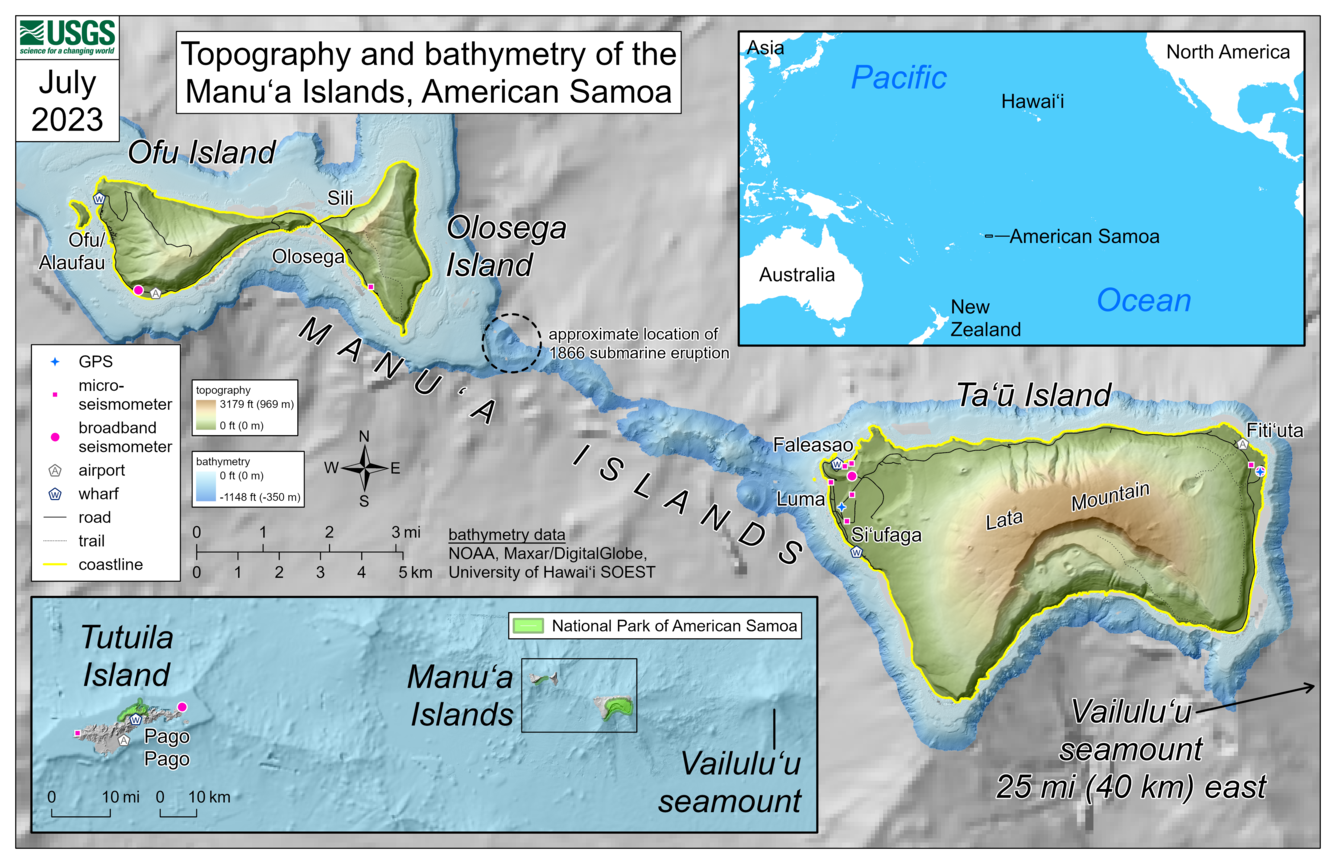Volcanoes in American Samoa
Volcanic activity in American Samoa is within the area of responsibility of the U.S. Geological Survey’s Hawaiian Volcano Observatory, based in Hilo on the Island of Hawai‘i. Tutuila, Ofu-Olosega and Ta‘ū are potentially active volcanoes within the United States Territory of American Samoa. All are considered low threat.






